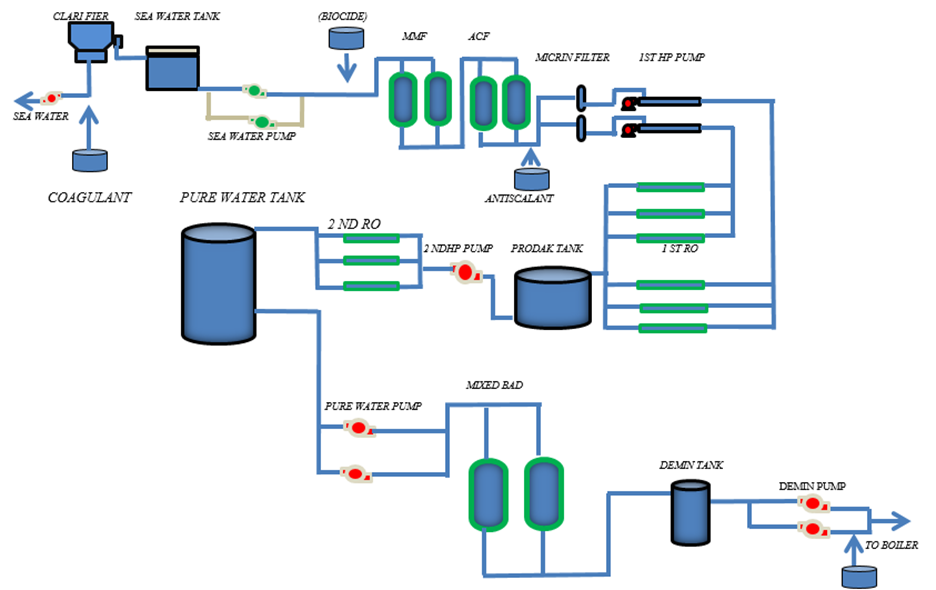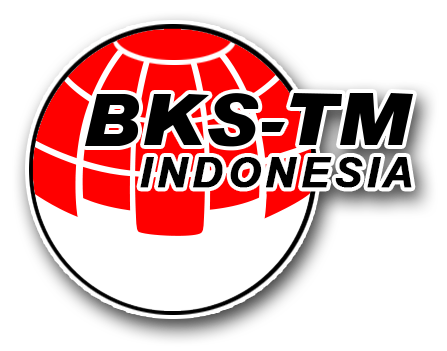Sistem Perawatan Water Treatment Plant (WTP) PLTU Nii Tanasa 3 x 10 MW
DOI:
https://doi.org/10.55679/pistonjt.v9i1.56Keywords:
Maintainance, Water conductivity, Predictive, Corrective, Thermal efficiencyAbstract
The power plant (PLTU Nii Tanasa) is located in Nii Tanasa Village, Soropia District, Konawe Regency, Kendari - Southeast Sulawesi. This 17.64 ha PLTU consists of 2 units, each producing 10 MW of electricity. The steam power plant system requires a water treatment system to change the water content from sea water to demin water or fresh water (WTP). Water treatment systems in the steam power plants are important to ensure efficient and sustainable operation. The water used in the steam cycle must be of high quality to prevent damage to boilers, turbines, and other components. The stages of water treatment include: Pretreatment, Demineralization, Degasification, Chemical Dosing, blowdown, condensate polishing, cooling water treatment. In the Water Treatment Plant process, the water conductivity is reduced to < 1 μs, this is done so that the electrical conductivity contained in the water is very small so as to minimize the potential for corrosion, and other oxidation processes. In addition to pH, the other parameters of boiler fill water are TDS, and water pH. The types of maintenance observed in this activity are preventive maintenance, and corrective maintenance. Preventive maintenance includes Sea water pump components, multimedia filters, active carbon filters, micron filters, HP pumps, SWRO. The corrective maintainaice in this observation includes micron filter equipment, SWRO, BWRO. The component maintenance process of the WTP has a direct effect on water quality so that it is related to the performance of the Pwer plant for both in terms of thermal performance and economical aspects.
Downloads
References
Y. A. Çengel and M. A. Boles, “Thermodynamics: An Engineering Approach”, 5th ed, McGraw-Hill, 2006.
Hibatullah, Iqmal, A Syuriadi, & Fachruddin, "Identifikasi Kemunculan Scaling pada Sistem SeaWater Reverse Osmosis (SWRO)," Seminar Nasional Teknik Mesin [Online], 9.1 pp. 1130-1137, 2019.
PT. PLN (Persero) - Asian tec Limited, “30m3 Sea Water Reserved Osmosis Sistem – Equipment Manual PLTU 3x10 MW Kendari Sulawesi Tenggara”, 4 – 2009.
H. La Bau, M. F. Safli, Sudarsono, and L. O. A. Barata, “Analisa Keselamatan dan Kesehatan Kerja Pada Pengoperasian Forklift di PT.Equiport Inti Indonesia”, Piston-JT, vol. 7, no. 2, pp. 7–15, Dec. 2022. https://doi.org/10.55679/pistonjt.v7i2.7
Dewantara, I.G. Yogi, B.M. Suyitno, dan I. G.E. Lesmana, “Desalinasi Air Laut Berbasis Energi Surya Sebagai Alternatif Penyediaan Air Bersih”, Jurnal Teknik Mesin, 7(1), pp. 01- 4, 2018.
http://dx.doi.org/10.22441/jtm.v7i1.2124.
Ragetisvara, A.Anandea, dan H.S.Titah, ‘Studi Kemampuan Desalinasi Air Laut Menggunakan Sistem Sea Water Reverse Osmosis (SWRO) Pada Kapal Pesiar’, Jurnal Teknik ITS, 10.2 (2021). https://doi.org/10.12962/j23373539.v10i2. 63933.
Sefentry dan R. Masriatini, “Pemanfaatan Teknologi Membran Reverse Osmosis (RO) Pada Proses Pengolahan Air Laut menjadi Air Bersih”, Redoks, vol. 5, no. 1, pp. 58–64, May 2020.

Downloads
Published
How to Cite
Issue
Section
License
Copyright (c) 2024 Piston: Jurnal Teknologi

This work is licensed under a Creative Commons Attribution-NonCommercial 4.0 International License.








